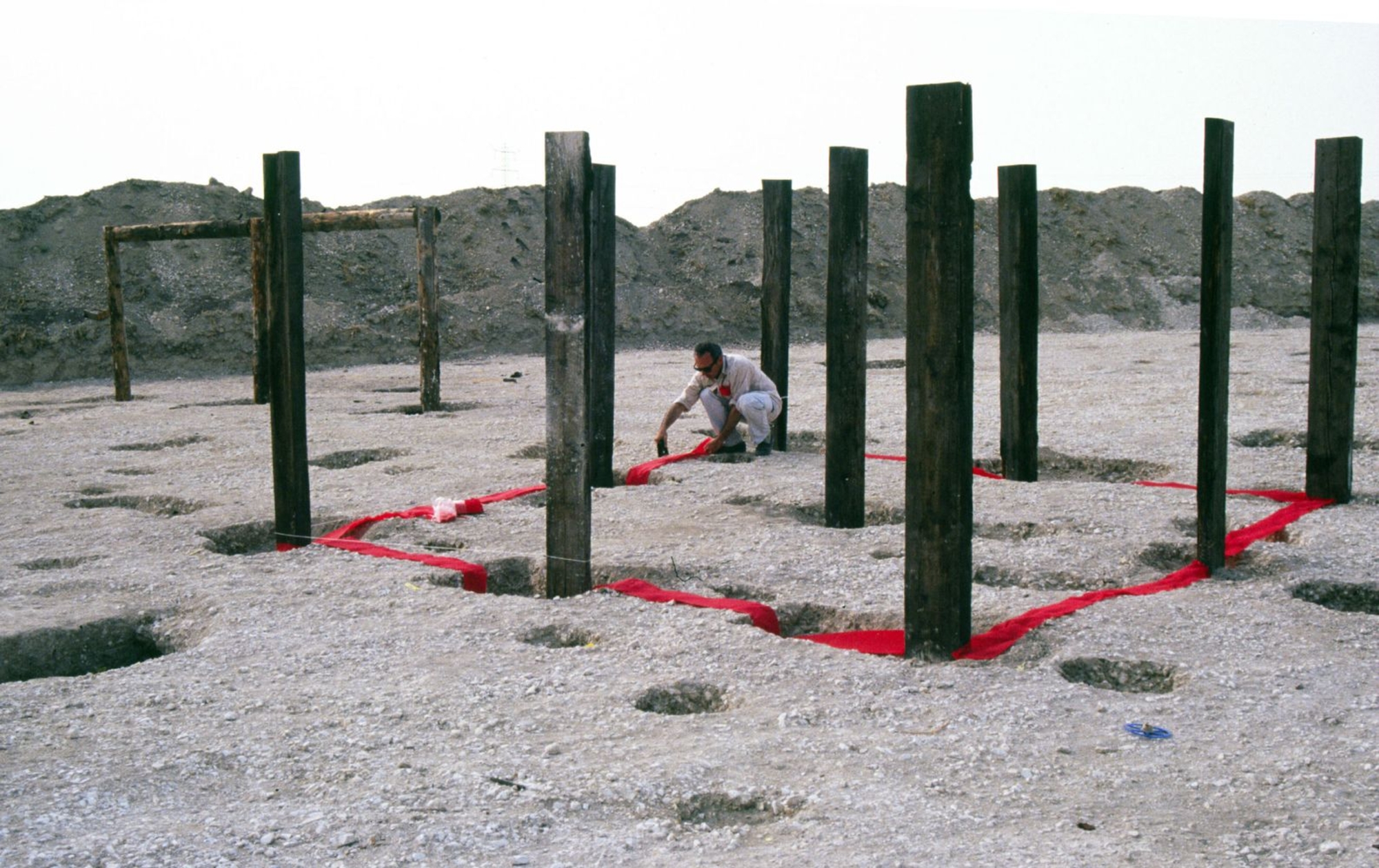
- Home
- Archaeological research
- Experimental archaeology
Two experiments were run in conjunction with the excavations.
From the start of research into the settlement it was clear that the bases of the post holes were horizontal. Since the terrain was sloping, this raised the question of whether the Gauls used a levelling system. It might also be possible to untangle the clusters of post holes and to isolate the building floor plans. To do this, a hundred wooden posts sawn from old wooden frames were cut into equal lengths and then placed in the excavated post holes. Recreating the physical volumes of the structures shown that a levelling system had definitely been used and that the wooden elements were probably cut and assembled on the ground before being raised. This experiment also revealed that the widened post holes were the result of rebuilding and not repairs. This observation subsequently proved very useful for isolating the various phases of construction.
The experimental reconstruction of a Gallic funeral pyre was an ambitious undertaking requiring careful preparation and access to some specialist equipment such as thermal imaging cameras. A number of animals, pigs, sheep, birds and dogs were placed on a pyre measuring 2m3 built of dry beech and oak wood. More than ten thermocouples were placed at different points in the pyre, at ground level, halfway up, at the top, in jars, and even inside the animals' bodies, in order to obtain accurate information on the combustion process. A series of jars conforming to the types identified on the site were made by a craftsman with clay dug in the valley. A spear tip, whose structure was well known since it was made for the purpose, some Gallic coins and other metal objects were placed on the pyre. The results were remarkably useful for studying the dynamics of combustion and heat variations and also the changes in the animals and the positioning of the remains once cremation was complete.





